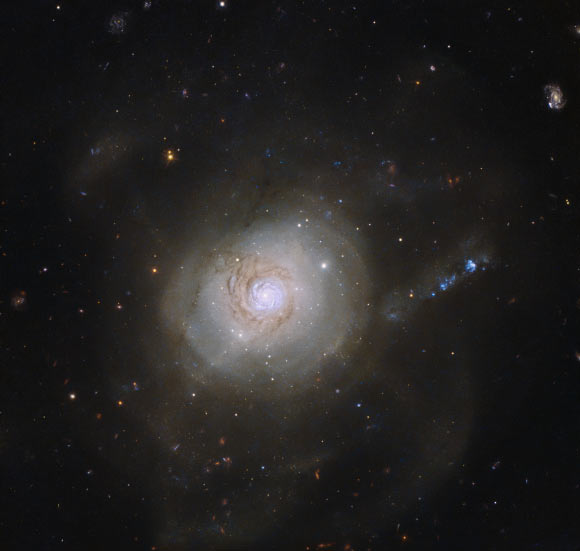The NASA/ESA Hubble Space Telescope has produced this beautiful image of the inner parts of the distant galaxy NGC 7252.

This image shows the central regions of the peculiar galaxy NGC 7252. Image credit: NASA / ESA / Hubble / Judy Schmidt, www.geckzilla.com.
NGC 7252, also known as LEDA 68612 or Arp 226, is a 12.7 magnitude peculiar galaxy in the constellation Aquarius.
It is about 212 million light-years distant and almost 200,000 light years across.
The galaxy has an odd nickname. In December 1953, President Eisenhower gave a speech that was dubbed Atoms for Peace.
The theme was promoting nuclear power for peaceful purposes – a particularly hot topic at the time.
This speech and the associated conference made waves in the scientific community and beyond to such an extent that NGC 7252 was named the Atoms for Peace galaxy.
This nickname is quite ironic, as the galaxy’s past was anything but peaceful.
Its peculiar appearance is the result of a collision between two similar gas-rich disc galaxies that took place about 600 million years ago, which ripped both galaxies apart.
The loop-like outer structures, likely made up of dust and stars flung outwards by the crash, but recalling orbiting electrons in an atom, are partly responsible for the galaxy’s nickname.
This Hubble image of NGC 7252 reveals a pinwheel-shaped disc of gas and young stars that is rotating in a direction opposite to the rest of the galaxy.
This disk has an uncanny resemblance to a face-on spiral galaxy. It is only about 10,000 light-years across – only 1/20 the diameter of the total galaxy and about a tenth of the size of our Milky Way Galaxy. It is believed that this whirling structure is a remnant of the galactic collision.
Astronomers recently discovered a population of about 40 exceptionally bright and young globular star clusters near the galaxy’s core.
Estimated to be mostly between 50 and 500 million years old, these star clusters were apparently born following the collision of the two galaxies and are considered the progenitors of similar clusters that orbit the Milky Way.
NGC 7252 may be a harbinger of our own Galaxy’s fate. Scientists predict that in about 4 billion years the Milky Way and the Andromeda Galaxy will collide, much as has happened with the Atoms for Peace galaxy.
A version of the image was entered into the Hubble’s Hidden Treasures Competition by astronomer Judy Schmidt.







